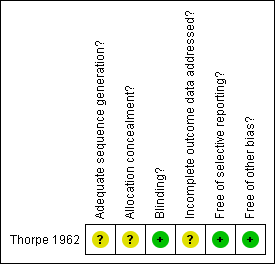Contenido relacionado
Revisiones y protocolos relacionados
Paul Gorczynski, Guy Faulkner | 12 mayo 2010
Jun Xia, Lars Bertil Merinder, Madhvi R Belgamwar | 15 junio 2011
Muhammad Qutayba Almerie, Muhammad Okba Al Marhi, Muhammad Jawoosh, Mohamad Alsabbagh, Hosam E Matar, Nicola Maayan, Hanna Bergman | 9 junio 2015
Saeed Farooq, Rupinder K Johal, Charlotte Ziff, Farooq Naeem | 24 octubre 2017
Tom McMonagle, Alec Sultana | 24 julio 2000
Jun Xia, Chunbo Li | 18 abril 2007
Rachel Ruddy, Kim Dent‐Brown | 24 enero 2007
Yanling He, Chunbo Li | 24 enero 2007
Lucy A Buckley, Nicola Maayan, Karla Soares‐Weiser, Clive E Adams | 14 abril 2015
Wan Lian LC Chua, Angelica Izquierdo de Santiago, Jayashri Kulkarni, Ann Mortimer | 19 octubre 2005




